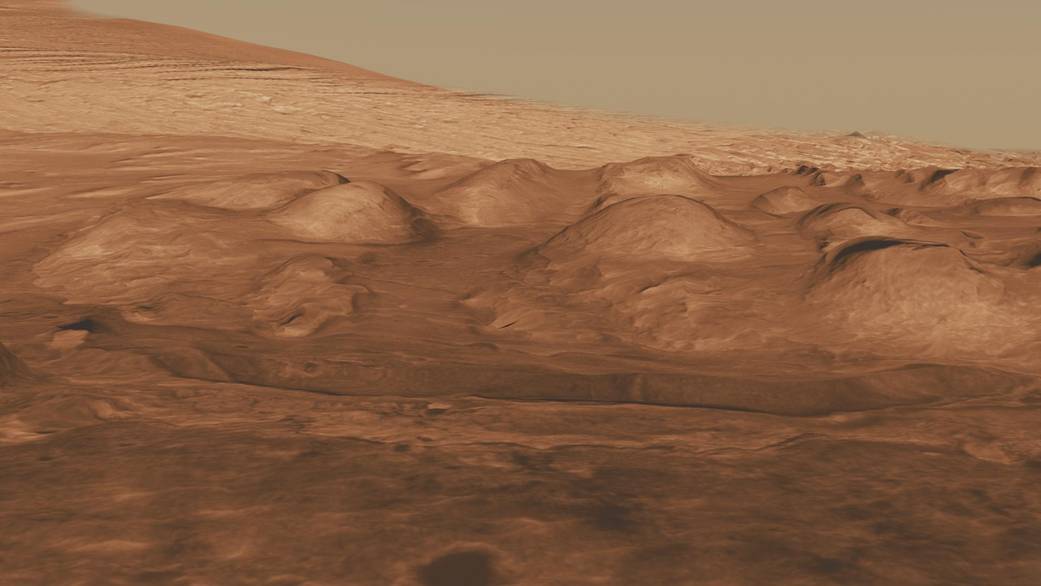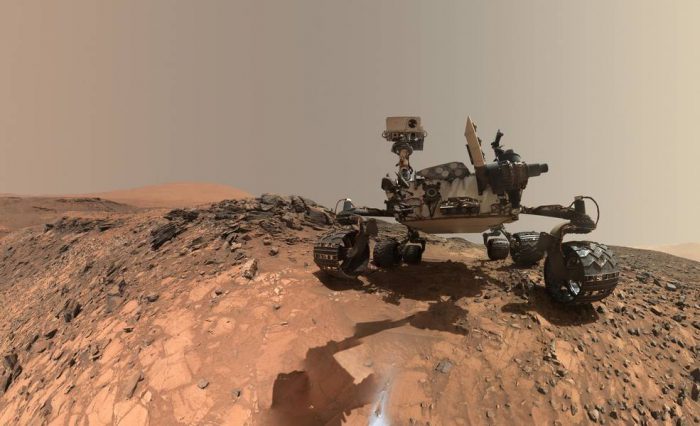On Thursday, NASA made a massive announcement about the exploration of the planet Mars.
They found life?!?
Okay, maybe not that massive. But they did discover something of similar importance.
Their rover, Curiosity, lived up to its name and uncovered ancient organic matter in Martian rocks. By digging 5 centimetres (2.2 inches) below the surface and heating the rock up, it was able to extract carbon-based molecules such as thiopene and dimethylsulfide. They may be hard to pronounce, but they represent potential building blocks of life.
From long, long ago

Gale Crater is the place on Mars where Curiosity "lives" and made its discovery. (NASA/JPL-Caltech/University of Arizona)
One of the biggest reasons for the excitement here is how old this material is. In truth, organic matter has been found elsewhere on Mars before this (not to mention on other bodies in the solar system, such as Jupiter's moon Titan).
But this organic matter dates back around 3.5 billion years, which puts it in the range of when life first began to take hold on Earth (the last common ancestor of all life on Earth dates back about 3.5 billion years ago). At that time, scientists believe that Mars was a much different planet than it is today. It very possibly had lakes of water and a thicker methane atmosphere that was capable of supporting life—even if it wasn't an oxygen-rich one like ours.
At the same time, NASA also released a discovery that the levels of methane in Mars' atmosphere change with the seasons. Why might this matter? On Earth, the levels of carbon change over the year based on the "seasonal breathing" of plants. Is there a similar hidden biological process behind the methane levels on Mars?
What's the catch?
Hey, you knew we were coming to this. Otherwise, the headline would've been "LIFE FOUND ON MARS!"
Simply put, the term "organic matter" only refers to the fact that it belongs to a larger family of carbon-based molecules. It's not fossilized bone, plant matter, or bacteria. Scientists aren't even sure where this stuff came from. Did it rain down on the surface inside meteorites? Or was it formed naturally on the surface (which might suggest that there were life-making processes happening on Mars at the time).
There is still so much left to discover here, but that's okay. It just means that there will be plenty for NASA's InSight lander to do when it arrives on Mars this November! And given that NASA's probes have literally just scratched the planet's surface, it's anyone's guess what they will find when they really start digging...
So you're saying there's a chance?
In the end, maybe this announcement can be best understood like this: This organic matter is like finding a bunch of LEGO blocks scattered in a long abandoned house. No one knows for sure that they were ever used to build anything. They don't even know whose blocks they were or how they got there.
But the opportunity to build something was certainly there.
The search of signs of life on Mars is just getting started...
Learn more about the site where Curiosity made this discovery in the video below.
 Curiosity has been exploring Mars since 2012. (NASA/JPL-Caltech/MSSS)
Curiosity has been exploring Mars since 2012. (NASA/JPL-Caltech/MSSS)









